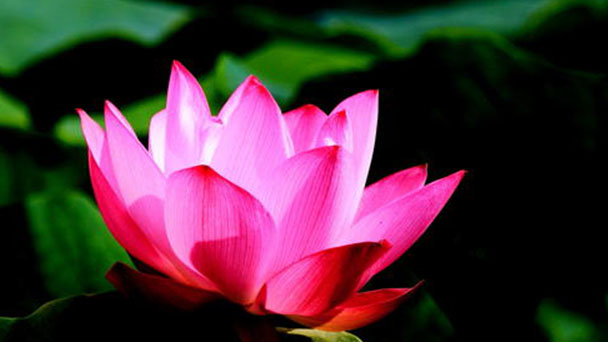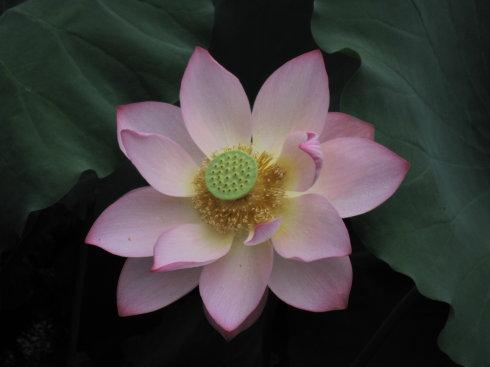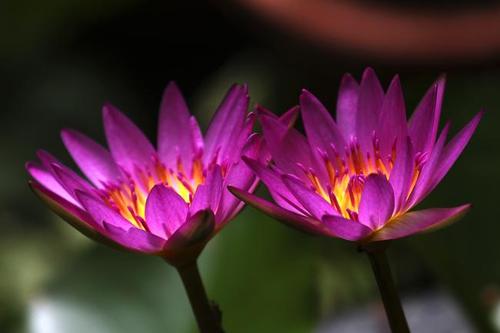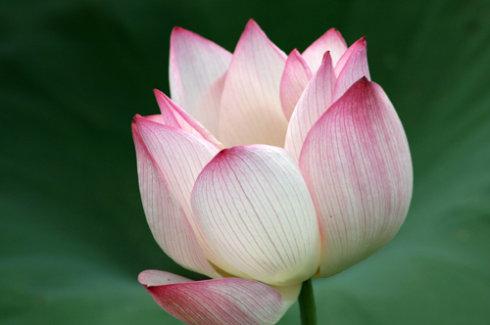Red water lily profile
Written by Maggie
Sep 11 2021

Red Water Lily is relatively hardy, and can survive safely in winter without protection in the south region of China. It is a strong-light, well-ventilated, shaded pond. Red Water Lily is distributed in China, India, the Caucasus region and Europe.
Red Water Lily picture

Morphological characteristics of Red Water Lily
Red Water Lily is a perennial aquatic herb;The rhizome is prostate; Leaves are papery, suborbicular, 10-25 cm in diam., base deeply curved, lobes acute, subparallel or spreading, entire or undulate, margin lightly triangular dentate, glabrous on both surfaces, punctate; Young leaves are purplish red. In old age, the upper part becomes dark green and shiny, while the lower part is dark purplish red. The petiole is 50 cm long.
Flowers large, 30-34 cm in diameter, rose-red, fragrant; The pedicel is slightly as long as petiole; Sepals are lanceolate, 3 -- 5 cm long, decaying after abscission or flowering; Petals are 20-25, white, ovate-rectangular, 3-5.5 cm long, outer wheel slightly longer than sepals;Red Water Lily receptacle is cylindrical; The anther apex does not lengthen, pollen grain is contracted, have mastoid process; The stigma is with 14-20 radiations, flattened.
Berries are flattened to hemispherical, 2.5-3 cm long; Seeds are elliptic, 2-3 cm long. red water lily flowering period is from June to August, and the fruiting period is from August to October.
Habitat of Red Water Lily
Red Water Lily is produced in Hebei, Shandong, Shaanxi and Zhejiang, China, born in a pond.China and Japan, North Korea, India, Siberia and Europe.
Red Water Lily growth habits
Red Water Lily is relatively hardy, and can survive safely in winter without protection in the south region of China. The soil quality requirements are not strict, pH value 6-8, can be normal growth, the most suitable water depth 25-30 cm, the deepest should not exceed 80 cm. Red Water Lily prefers loam rich in organic matter. Leaves germinate from March to April, blossom in succession from May to August, and each flower blooms for 2-5 days. The flower formed after. The stems and leaves wither in October-November. Red Water Lily reappeared in the spring of the following year. Red Water Lily was born in ponds, lakes, some parks in the pool often cultivated.

Red Water Lily propagation method
Division
Red Water Lily mainly adopts plant separation and propagation. The hardy species are usually separated in March and April before the germination in early spring. The hardy species have high requirements on air temperature and water temperature, so they can't be separated until around mid-May.When dividing plants, dig out the rhizomes, select the rhizomes with full new buds, cut the roots into 8-10 cm long segments with at least 1 bud in each segment, and then plant them. The top buds are buried in the topsoil, and the depth of the overlaying soil should be flat between the bud and the surface of the soil. Each pot is 5-7 sections.After planting, a little sun, can be injected into shallow water, to maintain the water temperature, but should not be too deep irrigation, otherwise it will affect the germination. The water level should be deepened when the temperature rises and new buds germinate. Place Red Water Lily in a well-ventilated and sunny place for maintenance. The water depth of the cultivation is 20-40cm. The water level can be deepened appropriately in summer and the basin water should be kept clean in the high temperature season.
Sow
Red Water Lily can also be seeded and propagated, that is, the flowers are transferred into water after flowering, and the flowers are wrapped in gauze bag before the fruit is ripe, so that the seeds fall into the bag after the fruit is broken. After harvesting, seeds must still be stored in water, or they will lose the ability to germinate if stored dry. Sow seeds in March-April, the basin soil with fertile clay loam, holding soil should not be too full, should be 5-6 cm from the mouth of the basin, after sowing into the seed cover soil 1 cm, press immersed in water. Water surface is 3-4 cm higher than the basin soil, the basin covered with glass, placed in a warm place to the sun, to improve the temperature in the basin. Sowing temperature in 25-30℃ is appropriate, after half a month or so of germination, the second year can be flowering.
Red Water Lily main value
The botanical garden
In the history of Chinese Dutch culture, the form of basin lotus was only used for private courtyard appreciation at the beginning. The arrangement technique of combining potted plant with pond plant enhances the ornamental value of basin lotus, which often appears in garden waterscape and garden sketch.Red Water Lily bonsai is a new bonsai. It is the organic combination of Red Water Lily potted and water stone bonsai.

Medicinal
According to the nutritional analysis of Red Water Lily, the results showed that Red Water Lily was rich in 17 kinds of amino acids, and water lily protein belonged to the high quality protein. The results also showed that Red Water Lily was rich in VC, flavone glycoside and trace element zinc, which combined with each other had a strong function of lead removal. Animal acute toxicity test micronucleus test and sperm distortion test all showed that water lily is a safe and reliable substance without any toxic and side effects. Red Water Lily pollen is a nutrient-rich, complete, balanced, concentrated and other characteristic, and is a natural nutrient source with a prospect of development and utilization.
Latest Updated
- Benefits of Bugleweed - 7 Science-backed Health Benefits
- Bugleweed Dangers & Side Effects - Is It Poisonous?
- How to Plant Evergreen Trees - What You Should Know
- When to Plant Evergreens - Grow Guide for Evergreen Trees
- 12 Wonderful Evergreen Shrubs for Your Garden
- 12 Popular Evergreen Plants with Pictures for Beginners
- When And How To Prune A Lilac Bush Like a Pro
- How to Grow & Care for Lilac Vine (Hardenbergia Violacea)
- Japanese Lilac Tree (Syringa Reticulata) Care & Propagation Guide
- Shumard Oak Pros and Cons - What to Know
Popular Articles
- Winter maintenance of Antirrhinum Majus
- How to Grow Terminalia Mantaly Tree
- How to Grow and Care for Crossostephium Chinense
- How to grow Antirrhinum Majus in spring
- Peristeria Elata (Dove Orchid) Profile: Info & Care Guide
- Underwatered Snake Plant (Sansevieria Trifasciata) - Signs And How To Fix
- How to Care for Brazilian Jasmine Plant (Mandevilla Sanderi)
- How to Grow & Care for Graptopetalum Purple Delight in Summer
- Rosa Chinensis (China Rose): Plant Growing & Care Tips
- How to Care for Baby Sun Rose (Aptenia Cordifolia)